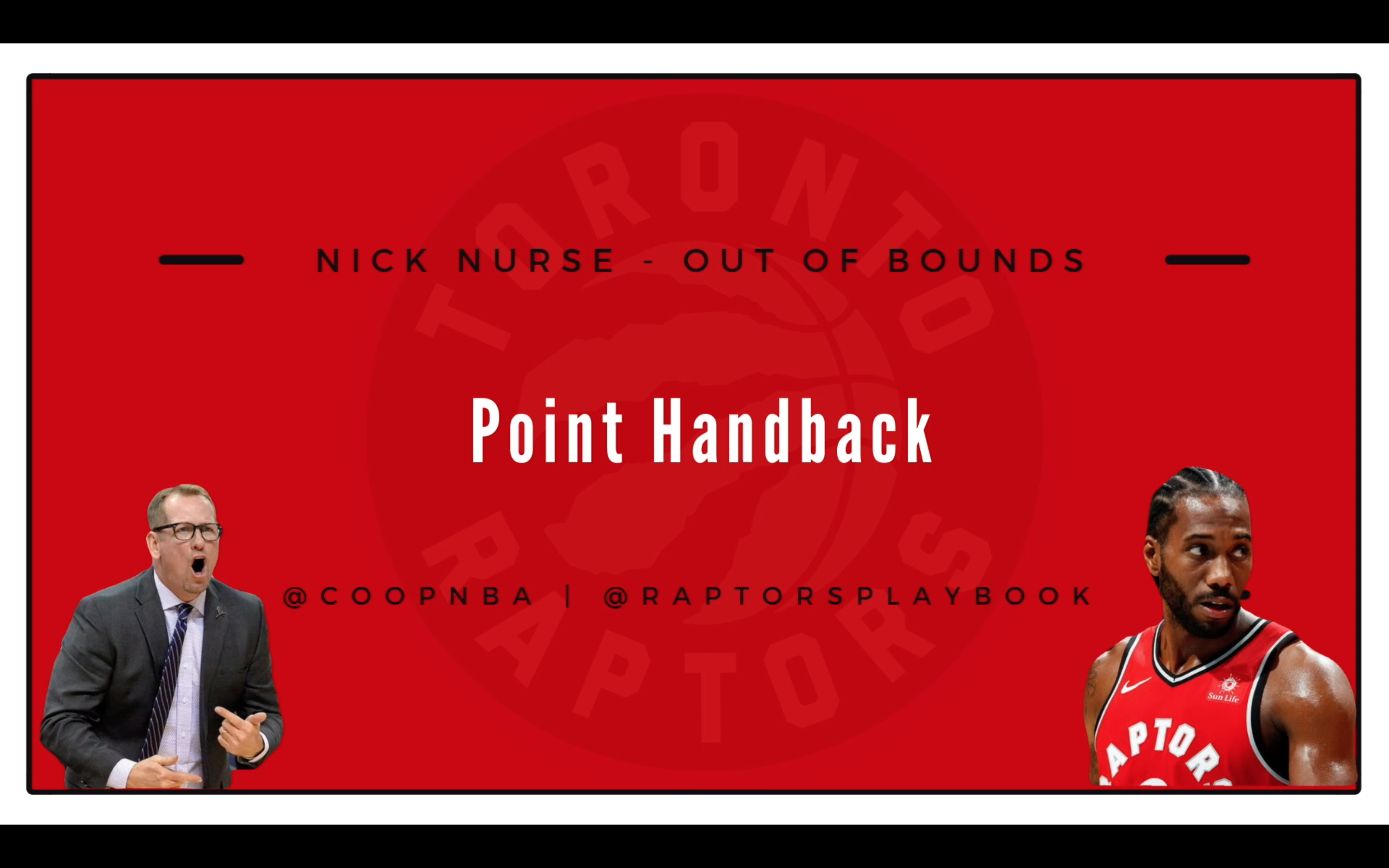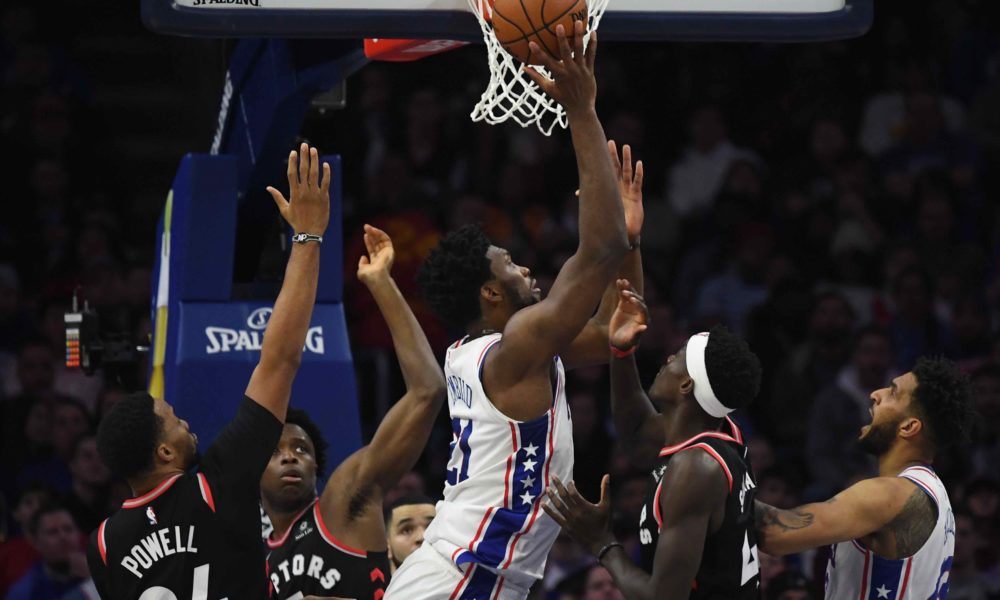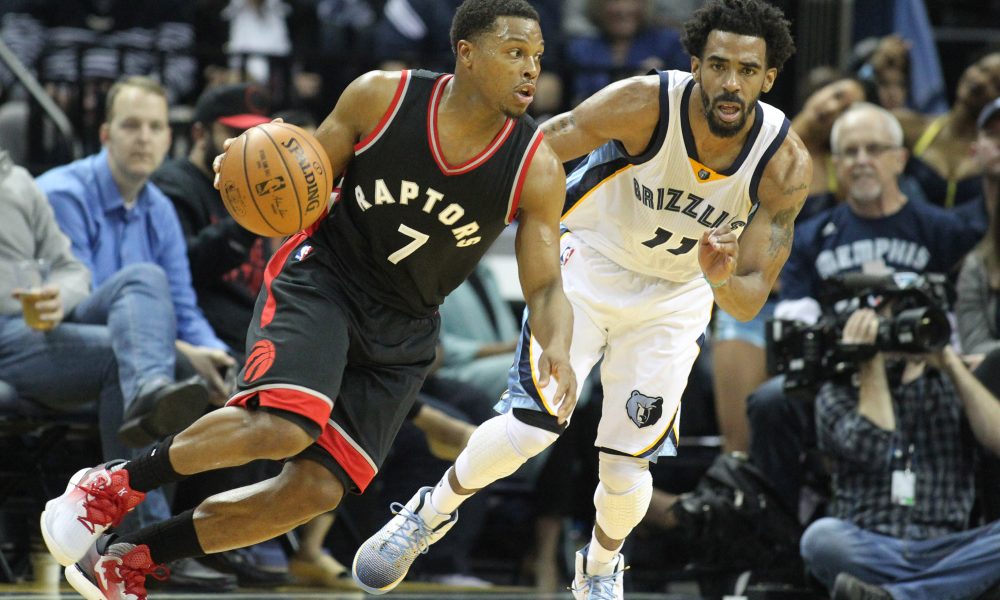Raptors Playbook: Point Handback
Over at the Raptors Playbook YouTube channel (@RaptorsPlaybook on Twitter), I am breaking down the X’s & O’s of the Toronto Raptors. This week, we’ll focus on their Point Handback – a play that can lead to a quick hitting pindown, or a pick and roll with an emptied out Strong Side. Watch the video embedded below alongside the summary written, and remember to follow and subscribe to never miss out on a video.
Option 1: Pindown – Starting at 0:34
With Toronto’s Point Guard initiating the play from above the break with one player deep in the strong side wing, the remaining three players are on the weak side of the floor.
The 5 will typically set a Pindown for the 4 – however this is not a scoring screen or cut. Rather, it is to engage their defender into tracking the 4 as they cut through to the opposite corner and takes them out of the mindset of a help defender.
Closely following behind, the 3 will receive a Pindown of their own from the 5. If they have an advantage created by use of the screen, they can shoot or attack on the catch. The spacing provided by the first Pindown gives them sufficient room to attack the paint with a nice gap being cleared out.
Option 2: DHO & Step-Up Pick and Roll – Starting at 1:55
The quick double Pindown option rarely creates a sufficient advantage for the second cutter to score off of upon catching the ball. In such an even, they quickly engage in a dribble hand-off (DHO) with the Point Guard that just passed them the ball. The ball handler will then quickly drive towards the sideline while the 5 flips around and sets a Step-Up ball screen.
The constant motion and player movement takes the primary screen defender and off-ball help defenders out of their typical positioning that allows them to load up on a ball screen, allowing for potential scoring options off of the side ball screen.
Note: To the very observant reader that notices the cover image says “Out of Bounds” – this is in fact a Half Court play and not an Out of Bounds one.



